
FOBBING FARM As based on information found on Agricology (www.agricology.co.uk)
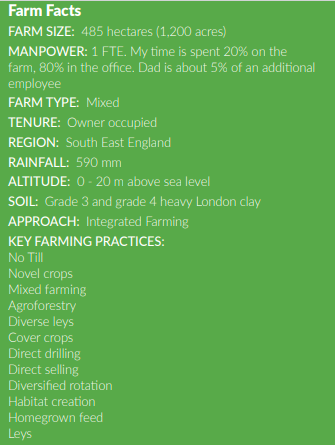
“My main goals in farming are two-fold: farming with nature as much as I possibly can, and achieving as diverse a range of nutritional diversity on the farm as possible”
The Farm:
Fobbing Farm is a 1,200 acre (485 hectare) zero tillage and zero insecticide arable and livestock farm in south Essex. We are not on the highest quality land, so my farming approach works with that. When I came home to the family farm in 2013, we were reasonably conventional farmers, occasionally ploughing, with standard chemical inputs, growing milling wheat; 7.5 tonnes (t) / hectare (ha), oilseed rape; 2 – 4 t / ha, and peas; 2.5 – 4.5 t / ha, with cattle primarily on permanent grass marshes and not integrated into the rotation. In the intervening years, I have introduced linseed, beans, heritage cereals, buckwheat, lentils, hemp, and am experimenting with sunflowers, millet, heritage corn and tiger nuts. I have also established 20% of the farm into herbal leys, and am currently investigating what dual purpose beef and dairy herd I would like.
At the end of 2020, I am planting my first field of agroforestry, with approximately 7,000 trees to be planted. These trees include a large portion of fruit and nut trees (including one belt of exotic trees – banking on climate change – almonds, persimmon, olives), plus birch trees (to harvest the sap for sugar or birch sap champagne), willow for tree mulch, and some woodland / timber trees also. I started working with Hodmedod in 2018, and have also been working on direct marketing my products, particularly to bakeries. I am about to take delivery of a flour stonemill, which will allow me to make flour of my heritage grains and buckwheat, and am hoping to be able to afford a decorticator for my buckwheat this year such that I can sell the groats.
I also developed my older farm buildings into commercial units. Agroecology is what drives me in farming. It is what I understand to be a whole farm approach based around incorporating nature into a farming system, but extends also to the way that farm products are marketed. Watch the video below to find out more…
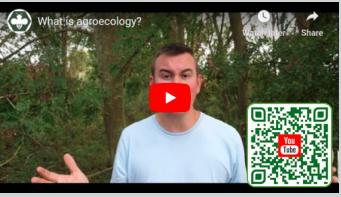
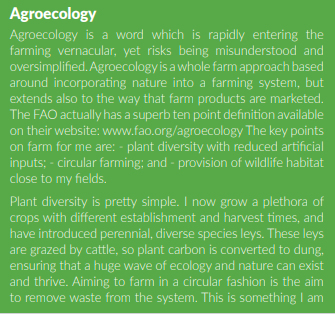
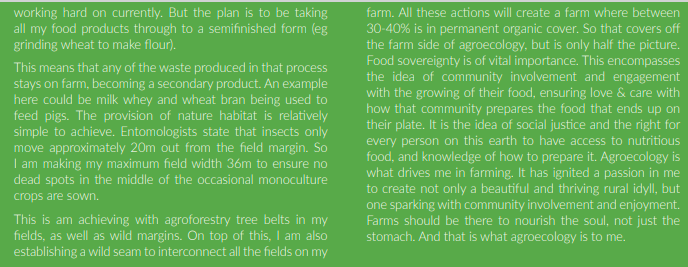
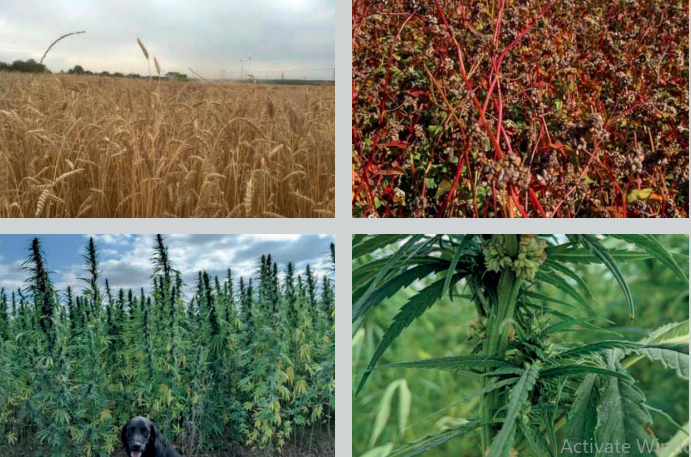

Sustainability in Practice:
The video below explains what I am implementing; diversity of crops, micro fields, turning headlands, wild margins, areas for winter bird food, woodland and agroforestry belts, interconnecting habitats, permanent forage, and providing habitat and food for pollinators…

A Systems Approach To Agriculture
The first field where I am implementing changes to my farming operation based around ecological and biodiversity principals is called Spratts. I tend to describe this as a systems approach to agriculture. Starting at the bottom of the field I have an area of winter bird food, currently in stewardship. I don’t particularly love this option, since it is so specific from a nature perspective, but it is a way in which I can receive some money for what I am attempting to do.
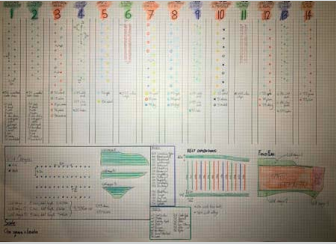
This area actually maps the wild seam carving through the middle of my farm, which interconnects each field together. Once this current option ends, this area will be planted with sporadic trees and shrubs, and under-sown with local grasses from the Fobbing marshes. The aim will be to green hay this area to get the grasses growing. I have then drawn a rectangle into the middle of the field, to make farming operations simple, and yet still manageable with large machinery.

The areas of the field outside of this rectangle are being planted this winter with native trees and fruit-bushes, which over a ten to fifteen year period should become more and more wild, and I will harvest less and less of the fruit (leaving more to nature). These wild margins obviously connect to the wild seam, ensuring permanent organic cover and plenty of permanent dense habitat for the animals on the farm. At the top of the field, against the reasonably busy high road, I am planting a stretch of woodland, around 80-90m deep. In order for arable farming, especially organic arable farming, to be successful, I know I need ruminants.
However, with the top of the field open, I am concerned about visual, noise, and vehicular pollution and its effect on my livestock. So a permanent tree bank will be a fantastic buffer to this. Long term, it will also enable woodland pigs, and potentially provide building and furniture making timber for my grandchildren. A lovely term I heard recently to describe this approach is being ‘good ancestors’. Set up like this, the middle of the field would still be an ecological desert – despite all the amazing habitat creation around the field edges.
Speaking to entomologists, I learnt that insects will only venture out around 20m from the margin of any field into the unknown. So I decided to slice my field up with agroforestry belts: 6m wide belts for trees, and 36m wide alleys for arable cropping, meaning a maximum journey of 18m into the unknown for any insects, and theoretically no dead spots in the middle of my fields. I chose 6m wide belts to enable me to have double and triple runs of trees growing up them. My issue with a single row of trees is that it gives you, as the farmer, too much opportunity to be tidy – mowing both sides of the trees.
With double or triple rows, there will always be an area of wild, where nature can really feel at home. I decided not quite to call it done yet though… Conventionally, even with agroforestry, the field, including the headland, would all be cropped with one crop. But from an agronomic point of view, I have always loved the idea of what I am terming ‘micro-fields’. Ie, I am choosing to leave the headland purely as a forage crop, and to be able to turn machinery. In my instance, this is a 20m turning headland.
The micro-fields have tonnes of great benefits. For one, when you grow lots of crops (like me!), it creates distinct, logistically useful areas of set size to grow those crops. And they also give you greater rotational flexibility to deal with injurious weeds. Ie, if just one or two microfields have an issue, you can extract those from any rotation, and deal with the issue in a timely fashion. From a mob grazing standpoint, these pre-determined grazing cell sizes will work easily for managing livestock also.
The turning headlands have lots of other logistical benefits. For me to farm agroecologically, animals are critical, so having permanent forage which can be cut is useful. But they also give a permanent site for water tanks to be placed. Whenever I have visited farms with rotational livestock, their arable fields invariably have a weedy area, always described of as the place where the water tank was. This eliminates that issue. Also, not having to sow the headland of the field, means that you get away from issues like double drilling, which can lead to lodging and disease in the crop. What’s more, these permanent turning headlands link my wild margins to the agroforestry belts, ensuring the belts are an interconnected part of the puzzle also – not just islands.
There is one thing I know I have missed out here, and am scratching my head as to whether to include or not. I need a lot more water on my farm. Partly from an irrigation standpoint for when I introduce some level of market gardening, but also from a nature point of view. So there is a chance that one of the top alleys will be partly converted to a pond or reservoir… Watch this space! Hopefully that goes someway to explain this systems approach to agriculture that I am beginning to implement across my farm.
This system is thoroughly designed to work for me converting to organic agriculture – this is habitat creation on a massive scale to ensure I have lots of beneficial insects at my disposal! But critically, this system would also work spectacularly well for large farming operations, still utilising all of the artificial inputs with big machinery. For example, I am currently not planting trees for the first 42m up my belts to ensure that a 36m sprayer has plenty of room to turn at the ends of the alleys. I am hoping to fill those 42m sections up with trees pretty soon though, when I feel confident I don’t need to be applying micronutrition or compost teas to my organic rotation.
I know that I will have mistakes within this system. I am pretty certain that the mistake which will annoy me most is deciding to plant in straight lines rather than contour planting the tree belts. But I am not going to let small point like that stop me from pushing forward with this. I am also sure that not all of my trees are going to be perfect, but worst case scenario, some trees will come out and enter the fibre market in ten or so years, and I will plant some new ones in their place. But farming would be awfully boring without mistakes. And either way, I am certain that this field, and in time my entire farm, will look spectacularly gorgeous and be abundantly productive in a truly diverse range of nutritional groups, with beautiful, bountiful biodiversity.
MOTIVATIONS:
My main goals in farming are two-fold: farming with nature as much as I possibly can, and achieving as diverse a range of nutritional diversity on the farm as possible. When it comes to farming with nature, I often take a few moments to just sit out and about on the farm and contemplate what is going on; be that lying in an herbal ley watching the clouds pass and listening to the creatures buzzing about, or taking a moment on a tree stump by the pond watching the dragonflies do battle. Each farming operation I interrogate as to its necessity, seeing if there is a way that I could utilise a natural system to accomplish the same result. The simplest example of this is rotating cattle over my arable land (which I am only just beginning to do), rather than having to specifically spread muck on the arable to increase the soil ecology. That being said, given our soil types, we are rarely able to outwinter stock, so consequently there will always be an amount of manure to deal with.
In terms of nutritional diversity, I have always had an issue with not knowing what happens to a product once it leaves the farm gate. This has begun more of a direct sales approach, which is only becoming more fervent. A lot of my cereal crops now go direct to bakers (and will soon begin being milled on farm too). This way I know that these bakers will be doing their best to extract the nutrition from that grain by making it bioavailable (usually via long fermentation). However, I also strive to produce a lot more than just beef and cereals. Historically my farm (under my grandfather and great uncle’s management) grew a lot of picking peas and veg for the London markets. We might not have the best land for market gardening, but it is something I am looking into and trying to find a business partner to work with me on that. The fruit and nut trees are also another fantastic source of diverse nutrition.
Besides that, I am also keen to ensure that we are catering for an ever-increasing vegan market, and so consequently looking at crops with decent protein levels. Lentils, peas and beans obviously fit the bill, but a lot of our land is pulse sick, and so I am looking at hemp and some other high protein crops to fill the void.
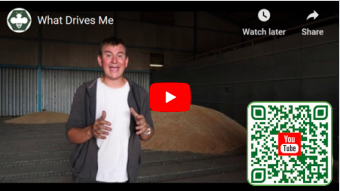
Compostable clothing is also very high up my agenda, so I am working on a flax project with a young costume designer for next year, and am hoping to begin using the fibre from my hemp also. I am a passionate agroecological farmer, trying my utmost to farm in harmony with nature as much as I possibly can. My biggest driver in all this is real food. Food, prepared well, with lots of bioavailable nutrition has the chance to really positively change how we manage our landscape in its entirety. This point about food is one of the key tenets of agroecology – thinking about the market and knowing where my produce is going.
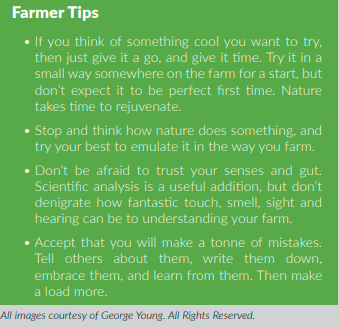
Visit www.agricology.co.uk to view this profile in full. Agricology is an independent collaboration of over 40 of the UK’s leading farming organisations sharing ideas on sustainable farming practices. We feature farmers working with natural processes to enhance their farming system, and have a wide range of farmer videos on our YouTube page. We also share the latest scientific learnings on agroecology with the farming community from our network of researchers. Our website hosts over 400 articles on different agroecological practices. In response to social distancing we are hosting a series of online virtual field days on a range of agroecological practices in collaboration with our partners. Subscribe to the newsletter or follow us on social media @agricology to keep up to date and share your questions and experiences with the Agricology community
